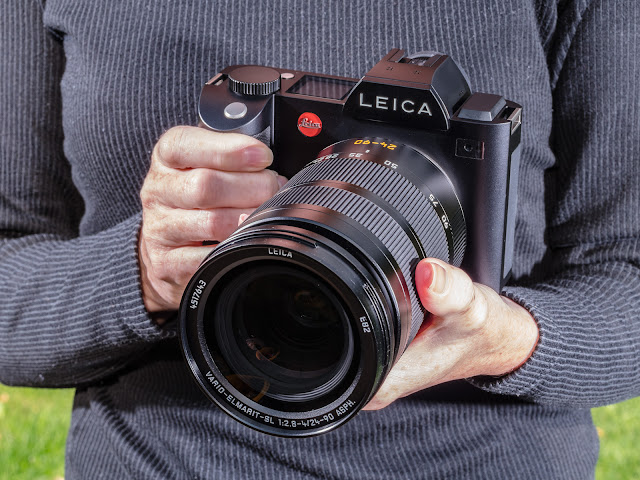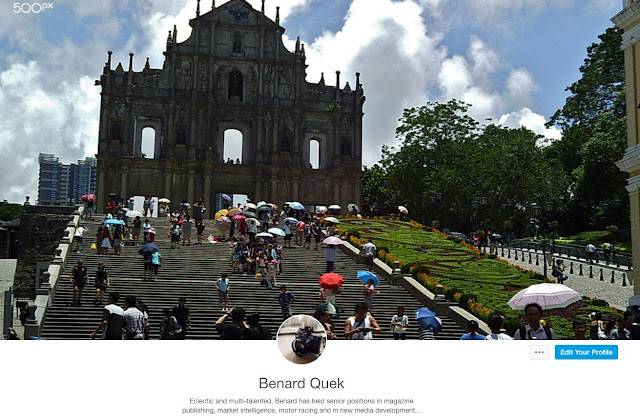Shooting with the Olympus Pen FT/F Film Camera
0
 |
Olympus Pen FT half frame film camera |
Film cameras are pretty cheap to procure from eBay these days and for me, I wanted to experience what having a half frame camera would be like. It's moments like these that challenge you as I have shot on 35mm film but never in half frame. The reason was simple. I didn't have the money to buy a half frame camera and had to settle for a 110 type compact film camera. Moving up to a 35mm camera was my next step up the ladder as by that time, the only half frame camera still selling was an automatic Yashica Samurai. It looked perfectly space age but I felt something wasn't right. It just didn't look like a real camera!
 |
| This is a single 35mm frame, captured by a half frame camera |
After doing some research, I settled for two classics from the 60s, the Pen F and FT. The difference is one comes without a light meter while the other one has one built in. The F model was the first and chirpy to use. The viewfinder is bright and the lenses are pretty good. So good in fact many idiots ended up selling the lenses to MFT digital mirror camera users, leaving the bodies behind to gather dust. That means you can get plenty of F cameras but they are without any lenses.
Having had experienced some of the best full frame film cameras like the Nikon FM and F4, going back to a camera that takes half frame is a bit disconnecting. Both the Pen FT and F are SLR type cameras, the only difference is that they have a very different type of lens arrangement and the FT suffers from a much darker viewfinder as some of the light has been siphoned off to power the light meter—making it a shade darker. This also means that in low light scenes, it will appear a little more difficult to focus. I prefer the F's focus screen as it's split screen so you can nail the focus faster than the FT.
Anyway, if you want to start shooting with half frame pen cameras like the FT, and F, here are a couple of tips.
Do not use a film faster than ASA 400
Another thing is that film stocks differ too. For example, negative film has less contrast quality than compared to slide or positive film. You need to know the types of film and their quality before hand to get the best out of them. No two film stocks are alike.
Even for B/W film, those processed specifically in C-41 color chemicals exhibit a lower quality of contrast than those processed specifically with B/W chemicals.
Some people even shot slide film with the half frame camera and there were half frame slides that could be used on slide projectors at one time. Slide film would be awesome but exposure would have to be spot on.
Crop your scene in the camera viewfinder
Subjects like city skylines and landscapes are poor choices for half frame because you have a much smaller image to play with. In terms of distance to subject, the best are within 15 feet from your camera. If the subject is too small within the frame, you will have to crop it to make it look larger and unless you get high quality scans at 300dpi and above on positive film, chances are those images won't be suitable for further cropping when captured on negative film. |
| this is a tight crop with the whole subject area filling the frame |
In a full frame 35mm slide or negative, you don't have this problem as the film area is twice as large this allows for better clarity and composition as you can still crop the frame for a tighter composition and still have plenty left over for a good print. In half frame, you are discouraged from doing this as cropping it further will not enhance the detail and clarity as you are already stuck with a smaller frame. Blowing that up will lead to more dot grain.
You have to think in terms of how much can you enlarge your half frame image before the quality starts to suffer. In camera cropping of the scene to fill your frame is recommended
Always use a Light Meter
The incidence light meter measures falling light from a source while a spot meter measures light at where you are pointing. The incidence light meter has a diffusion dome for a head while the spot meter uses the iPhone's camera to measure light from a desire location. It's not the most accurate but it does fine for general lighting but when it comes to high contrast scenes you have to take several measurements using the Zone System to best bring out the hidden details.
 |
| Kodalux and Voigtlander lightmeters for film cameras |
The zone system of film exposure tells you to measure both the highlight and low lights to ensure that the details are captured on film.
You can also get those analogue light meters but the new ones are more accurate. Take for example the Voigtlander meter, it is very accurate and uses 2x LR44 batteries. Whereas the Kodalux doesn't use any batteries and can be subject to wear after the photo sensitive element wear out over time.
Scanning and Post Production
Developing a roll and having it scanned is relatively easy but I must warn you that some photo labs don't do this. You need to have someone who has a color lab that also caters to the needs of film photographers to get high quality scans as most of the scanning done through color lab process is of a lower quality.I have not shot these on positive film but these will pose a bit of a problem as half frame slide mounts are very difficult to come by these days. In the old days, there were easy but I have only come across one or two sellers so far on eBay.
That's not to say you can't shoot with positive film using half frame cameras if all you want is a scanned image for sharing and a physical slide frame for archival purposes.
The half frame camera is quirky at best, something which you should be aware of from the very beginning. It's probably quite good for street photography and anything casual but wide angle shooting like landscapes and cityscapes would be extremely difficult to achieve.
For one, the wide angle lenses from Olympus for the FT and F cameras are extremely expensive...it's probably even next to impossible to get them now as can be seen by the relative prices of these lenses once they are available on eBay. Wide angle is probably the half frame camera's weakest point, and it shows.
When you scan, and depending on the scanner used. The scanned image is no larger than 4 megapixels if you are using a 8 megapixel full frame scanner. You must not forget that you will lose picture quality once you start to divide the image in half. Bummer....but that's how it is.
The last hurdle is really the lenses for the Pen F. These have become very hard to come by over the years because mirrorless camera users have been snapping them up. That also means there are a whole load of F cameras that sell without any lens and you can bargain that down cheap. To use, you will have to find a way to obtain a lens mount for full frame Nikon or Olympus OM lenses which is also relatively difficult to find these days. Besides this, shooting with a half frame is really an experience where you can learn to appreciate analog photography. The challenge is what you should be looking forward to as the mere click of a shutter to get a picture can easily be satisfied with just your mobile phone camera while the same can't be said for film cameras.
 |
| Pen F, note the F motif. This is the first model |






































.JPG)


